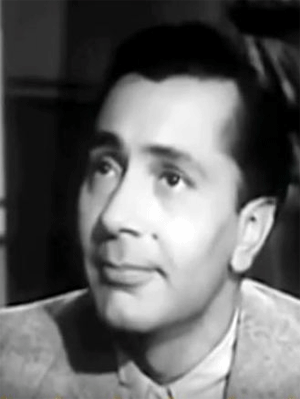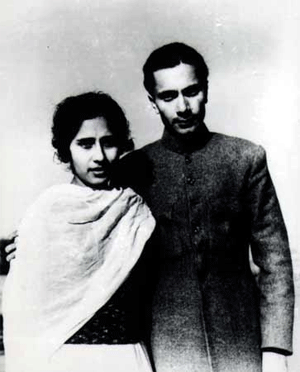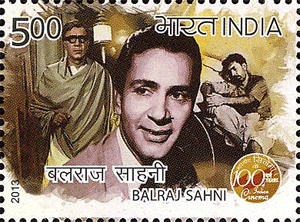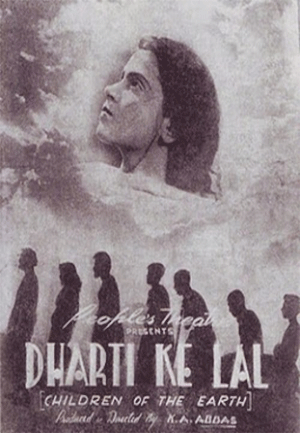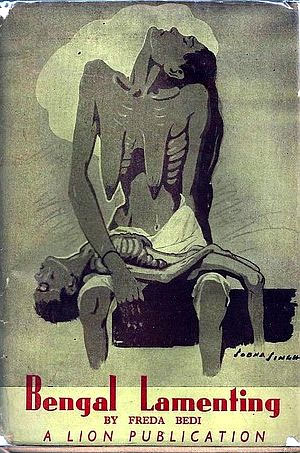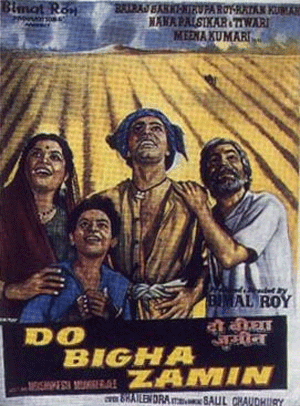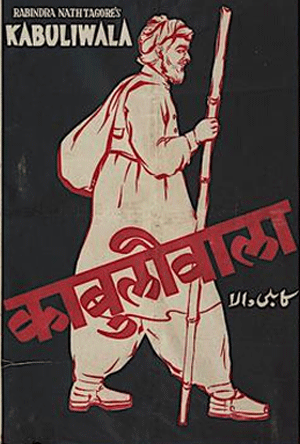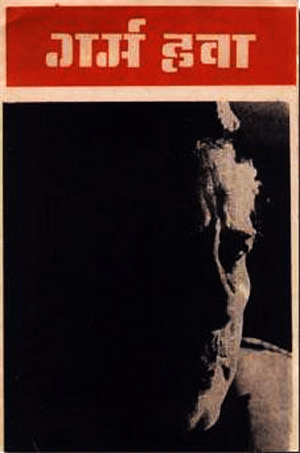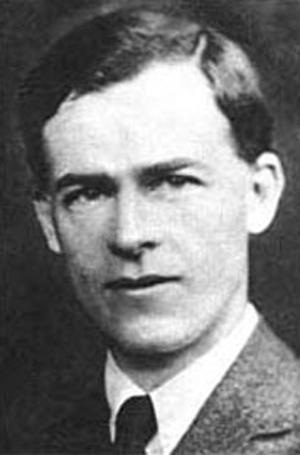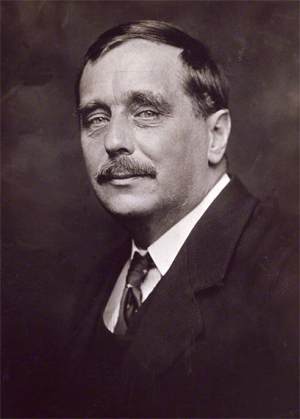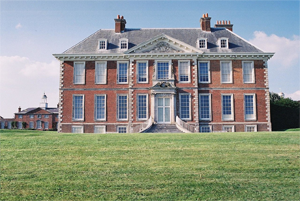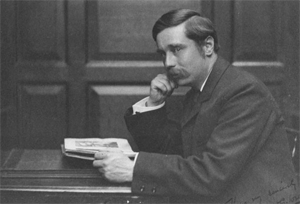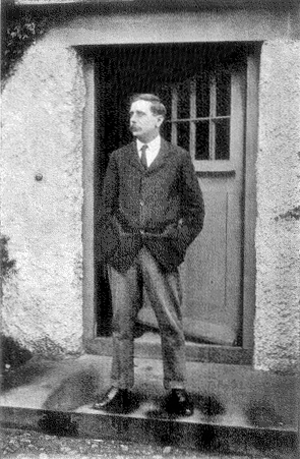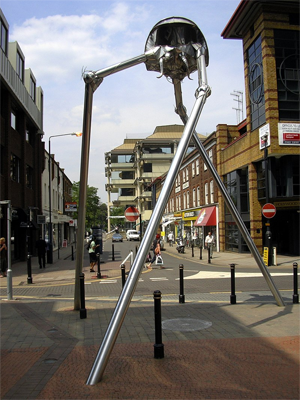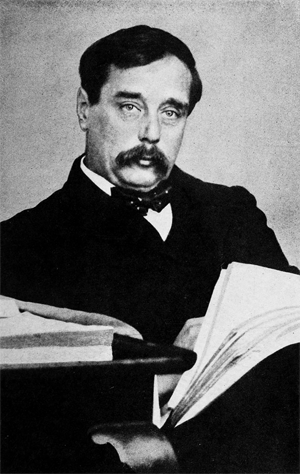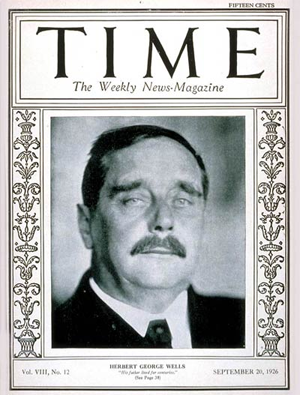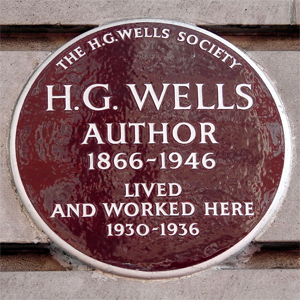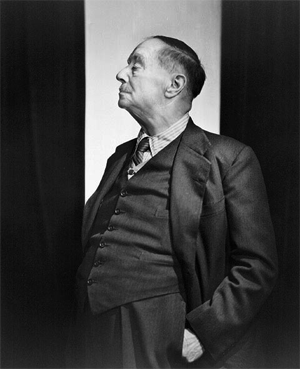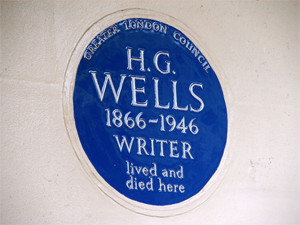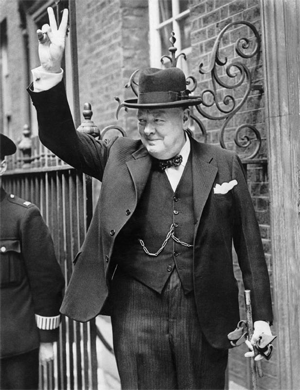Part 2 of 2
Religious viewsWells wrote in his book God the Invisible King (1917) that his idea of God did not draw upon the traditional religions of the world:
This book sets out as forcibly and exactly as possible the religious belief of the writer. [Which] is a profound belief in a personal and intimate God. ... Putting the leading idea of this book very roughly, these two antagonistic typical conceptions of God may be best contrasted by speaking of one of them as God-as-Nature or the Creator, and of the other as God-as-Christ or the Redeemer. One is the great Outward God; the other is the Inmost God. The first idea was perhaps developed most highly and completely in the God of Spinoza. It is a conception of God tending to pantheism, to an idea of a comprehensive God as ruling with justice rather than affection, to a conception of aloofness and awestriking worshipfulness. The second idea, which is opposed to this idea of an absolute God, is the God of the human heart. The writer would suggest that the great outline of the theological struggles of that phase of civilisation and world unity which produced Christianity, was a persistent but unsuccessful attempt to get these two different ideas of God into one focus.[107]
Later in the work, he aligns himself with a "renascent or modern religion ... neither atheist nor Buddhist nor Mohammedan nor Christian ... [that] he has found growing up in himself".[108]
Of Christianity, he said: "it is not now true for me. ... Every believing Christian is, I am sure, my spiritual brother ... but if systemically I called myself a Christian I feel that to most men I should imply too much and so tell a lie". Of other world religions, he writes: "All these religions are true for me as Canterbury Cathedral is a true thing and as a Swiss chalet is a true thing. There they are, and they have served a purpose, they have worked. Only they are not true for me to live in them. ... They do not work for me".[109] In The Fate of Homo Sapiens (1939), Wells criticised almost all world religions and philosophies, stating "there is no creed, no way of living left in the world at all, that really meets the needs of the time… When we come to look at them coolly and dispassionately, all the main religions, patriotic, moral and customary systems in which human beings are sheltering today, appear to be in a state of jostling and mutually destructive movement, like the houses and palaces and other buildings of some vast, sprawling city overtaken by a landslide.[110]
Literary influence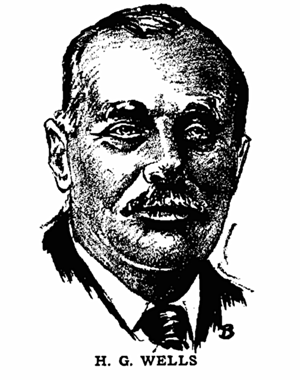 H. G. Wells as depicted in Gernsback's Science Wonder Stories in 1929
H. G. Wells as depicted in Gernsback's Science Wonder Stories in 1929The science fiction historian John Clute describes Wells as "the most important writer the genre has yet seen", and notes his work has been central to both British and American science fiction.[111] Science fiction author and critic Algis Budrys said Wells "remains the outstanding expositor of both the hope, and the despair, which are embodied in the technology and which are the major facts of life in our world".[112] He was nominated for the Nobel Prize in Literature in 1921, 1932, 1935, and 1946.[10] Wells so influenced real exploration of Mars that an impact crater on the planet was named after him.[113]
Wells’s genius was his ability to create a stream of brand new, wholly original stories out of thin air. Originality was Wells’s calling card. In a six-year stretch from 1895 to 1901, he produced a stream of what he called “scientific romance” novels, which included The Time Machine, The Island of Doctor Moreau, The Invisible Man, The War of the Worlds and The First Men in the Moon. This was a dazzling display of new thought, endlessly copied since. A book like The War of the Worlds inspired every one of the thousands of alien invasion stories that followed. It burned its way into the psyche of mankind and changed us all forever.
— Cultural historian John Higgs, The Guardian.[100]
In the United Kingdom, Wells's work was a key model for the British “scientific romance”, and other writers in that mode, such as Olaf Stapledon,[114] J. D. Beresford,[115] S. Fowler Wright,[116] and Naomi Mitchison,[117] all drew on Wells's example. Wells was also an important influence on British science fiction of the period after the Second World War, with Arthur C. Clarke[118] and Brian Aldiss[119] expressing strong admiration for Wells's work. Among contemporary British science fiction writers, Stephen Baxter, Christopher Priest and Adam Roberts have all acknowledged Wells's influence on their writing; all three are Vice-Presidents of the H. G. Wells Society. He also had a strong influence on British scientist J. B. S. Haldane, who wrote Daedalus; or, Science and the Future (1924), "The Last Judgement" and "On Being the Right Size" from the essay collection Possible Worlds (1927), and Biological Possibilities for the Human Species in the Next Ten Thousand Years (1963), which are speculations about the future of human evolution and life on other planets. Haldane gave several lectures about these topics which in turn influenced other science fiction writers.[120][121]
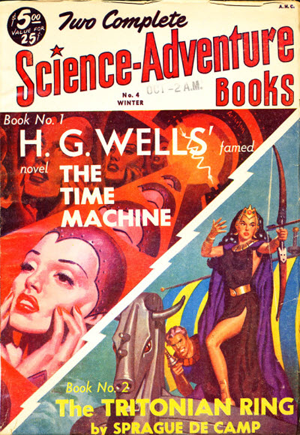 Wells's works were reprinted in American science fiction magazines as late as the 1950s
Wells's works were reprinted in American science fiction magazines as late as the 1950sIn the United States, Hugo Gernsback reprinted most of Wells's work in the pulp magazine Amazing Stories, regarding Wells's work as "texts of central importance to the self-conscious new genre".[111] Later American writers such as Ray Bradbury,[122] Isaac Asimov,[123] Frank Herbert[124] and Ursula K. Le Guin[125] all recalled being influenced by Wells's work.
Sinclair Lewis's early novels were strongly influenced by Wells's realistic social novels, such as The History of Mr Polly; Lewis would also name his first son Wells after the author.[126]
In an interview with The Paris Review, Vladimir Nabokov described Wells as his favourite writer when he was a boy and "a great artist."[127] He went on to cite The Passionate Friends, Ann Veronica, The Time Machine, and The Country of the Blind as superior to anything else written by Wells's British contemporaries. In an apparent allusion to Wells's socialism and political themes, Nabokov said: "His sociological cogitations can be safely ignored, of course, but his romances and fantasies are superb."[127]
 2016 illustrated postal envelope with an image from The War of the Worlds, Russian Post, commemorating the 150th anniversary of the author's birth
2016 illustrated postal envelope with an image from The War of the Worlds, Russian Post, commemorating the 150th anniversary of the author's birthJorge Luis Borges wrote many short pieces on Wells in which he demonstrates a deep familiarity with much of Wells's work.[128] While Borges wrote several critical reviews, including a mostly negative review of Wells's film Things to Come,[129] he regularly treated Wells as a canonical figure of fantastic literature. Late in his life, Borges included The Invisible Man and The Time Machine in his Prologue to a Personal Library,[130] a curated list of 100 great works of literature that he undertook at the behest of the Argentine publishing house Emecé. Canadian author Margaret Atwood read Wells' books,[70] and he also inspired writers of European speculative fiction such as Karel Čapek[125] and Yevgeny Zamyatin.[125]
Representations
Literary• The superhuman protagonist of J. D. Beresford's 1911 novel, The Hampdenshire Wonder, Victor Stott, was based on Wells.[115]
• In M. P. Shiel's short story "The Primate of the Rose" (1928), there is an unpleasant womaniser named E. P. Crooks, who was written as a parody of Wells.[131] Wells had attacked Shiel's Prince Zaleski when it was published in 1895, and this was Shiel's response.[131] Wells praised Shiel's The Purple Cloud (1901); in turn Shiel expressed admiration for Wells, referring to him at a speech to the Horsham Rotary Club in 1933 as "my friend Mr. Wells".[131]
• In C. S. Lewis's novel That Hideous Strength (1945), the character Jules is a caricature of Wells,[132] and much of Lewis's science fiction was written both under the influence of Wells and as an antithesis to his work (or, as he put it, an "exorcism"[133] of the influence it had on him).
• In Brian Aldiss's novella The Saliva Tree (1966), Wells has a small off screen guest role.[134]
• In Saul Bellow's novel Mr. Sammler's Planet (1970), Wells is one of several historical figures the protagonist met when he was a young man.[135]
• In The Map of Time (2008) by Spanish author Félix J. Palma; Wells is one of several historical characters.[136]
• Wells is one of the two Georges in Paul Levinson's 2013 time-travel novelette, "Ian, George, and George," published in Analog magazine.[137]
Dramatic• Rod Taylor portrays Wells[138][139] in the 1960 science fiction film The Time Machine (based on the novel of the same name), in which Wells uses his time machine to try and find his Utopian society.[139]
• Malcolm McDowell portrays Wells in the 1979 science fiction film Time After Time, in which Wells uses a time machine to pursue Jack the Ripper to the present day.[139] In the film, Wells meets "Amy" in the future who then returns to 1893 to become his second wife Amy Catherine Robbins.
• Wells is portrayed in the 1985 story Timelash from the 22nd season of the BBC science-fiction television series Doctor Who. In this story, Herbert, an enthusiastic temporary companion to the Doctor, is revealed to be a young H. G. Wells. The plot is loosely based upon the themes and characters of The Time Machine with references to The War of the Worlds, The Invisible Man and The Island of Doctor Moreau. The story jokingly suggests that Wells's inspiration for his later novels came from his adventure with the Sixth Doctor.[140]
• In the BBC2 anthology series Encounters about imagined meetings between historical figures, Beautiful Lies, by Paul Pender (15 August 1992) centred on an acrimonious dinner party attended by Wells (Richard Todd), George Orwell (Jon Finch), and William Empson (Patrick Ryecart).
• The character of Wells also appeared in several episodes of Lois & Clark: The New Adventures of Superman (1993–1997), usually pitted against the time-travelling villain known as Tempus (Lane Davies). Wells's younger self was played by Terry Kiser, and the older Wells was played by Hamilton Camp.
• In the British TV mini-series The Infinite Worlds of H. G. Wells (2001), several of Wells's short stories are dramatised but are adapted using Wells himself (Tom Ward) as the main protagonist in each story.
• In the Disney Channel Original Series Phil of the Future, which centres on time-travel, the present-day high school that the main characters attend is named "H. G. Wells".[141]
• In the 2006 television docudrama H. G. Wells: War with the World, Wells is played by Michael Sheen.[142]
• On the science fiction television series Warehouse 13 (2009–2014), there is a female version Helena G. Wells. When she appeared she explained that her brother was her front for her writing because a female science fiction author would not be accepted.[143]
• Comedian Paul F. Tompkins portrays a fictional Wells as the host of The Dead Authors Podcast, wherein Wells uses his time machine to bring dead authors (played by other comedians) to the present and interview them.[144][145]
• H. G. Wells as a young boy appears in the Legends of Tomorrow episode "The Magnificent Eight". In this story, the boy Wells is dying of consumption but is cured by a time-travelling Martin Stein.
• In the four part series The Nightmare Worlds of H. G. Wells (2016), Wells is played by Ray Winstone.[146]
• In the 2017 television series version of Time After Time, based on the 1979 film, H. G. Wells is portrayed by Freddie Stroma.[147]
Literary papersIn 1954, the University of Illinois at Urbana–Champaign purchased the H. G. Wells literary papers and correspondence collection.[148] The University's Rare Book & Manuscript Library holds the largest collection of Wells manuscripts, correspondence, first editions and publications in the United States.[149] Among these is an unpublished material and the manuscripts of such works as The War of the Worlds and The Time Machine. The collection includes first editions, revisions, translations. The letters contain general family correspondence, communications from publishers, material regarding the Fabian Society, and letters from politicians and public figures, most notably George Bernard Shaw and Joseph Conrad.[148]
BibliographyMain article: H. G. Wells bibliography
Notes1. Science fiction magazine editors Hugo Gernsback and John W. Campbell were the inaugural deceased members of the Science Fiction and Fantasy Hall of Fame, inducted in 1996 and followed annually by fiction writers Wells and Isaac Asimov, C. L. Moore and Robert Heinlein, Abraham Merritt and Jules Verne.[150]
References1. "Lost daughter of Wells' passion. (writer H. G. Wells) – Version details – Trove". Trove.nla.gov.au. 11 August 1996. Retrieved 25 March 2014.
2. "Death Notice Summaries Available for Listings at A Memory Tree". Amemorytree.co.nz. Retrieved 25 March 2014.
3. "Wells, H. G.". Revised 20 May 2015. The Encyclopedia of Science Fiction (sf-encyclopedia.com). Retrieved 2015-08-22. Entry by 'JC/BS', John Clute and Brian Stableford.
4. Parrinder, Patrick (2004). Oxford Dictionary of National Biography. Oxford University Press.
5. Adam Charles Roberts (2000), "The History of Science Fiction", page 48. In Science Fiction, Routledge, ISBN 0-415-19204-8.
6. Siegel, Mark Richard (1988). Hugo Gernsback, Father of Modern Science Fiction: With Essays on Frank Herbert and Bram Stoker. Borgo Pr. ISBN 0-89370-174-2.
7. "HG Wells: A visionary who should be remembered for his social predictions, not just his scientific ones". The Independent. 9 October 2017.
8. Wagar, W. Warren (2004). H. G. Wells: Traversing Time. Wesleyan University Press. p. 7.
9. "How Hollywood fell for a British visionary". The Telegraph. Retrieved 14 March 2019.
10. "Nomination Database: Herbert G Wells". Nobel Prize.org. Retrieved 19 March 2015.
11. Robert M. Philmus and David Y. Hughes, ed., H. G. Wells: Early Writings in Science and Science Fiction (Berkeley, Los Angeles, and London: University of California Press, 1975), p. 179.
12. Vincent Brome, H. G. Wells: A Biography (London, New York, and Toronto: Longmans, Green, 1951).
13. Vincent Brome, H. G. Wells: A Biography (London, New York, and Toronto: Longmans, Green, 1951), p. 99.
14. "H G Wells - Author, Historian, Teacher with Type 2 Diabetes".
http://www.diabetes.co.uk. Retrieved 18 February 2019.
15. Wells, H. G. (2005) [1905]. Claeys, Gregory; Parrinder, Patrick (eds.). A Modern Utopia. Gregory Claeys, Francis Wheen, Andy Sawyer. Penguin Classics. ISBN 978-0-14-144112-2.
16. Smith, David C. (1986) H. G. Wells: Desperately mortal. A biography. Yale University Press, New Haven and London ISBN 0-300-03672-8
17. "Sep. 21, 1866: Wells Springs Forth". Wired. 9 October 2017.
18. Nairn, Ian; Pevsner, Nikolaus (1965). The Buildings of England: Sussex. Harmondsworth: Penguin Books. pp. 358–60. ISBN 0-14-071028-0.
19. "HG Wells: prophet of free love". The Guardian. 11 October 2017.
20. Wells, Geoffrey H. (1925). The Works of H. G. Wells. London: Routledge. p. xvi. ISBN 0-86012-096-1. OCLC 458934085.
21. Batchelor, John (1985). H. G. Wells. Cambridge, England: Cambridge University Press. p. 2. ISBN 0-521-27804-X.
22. Pilkington, Ace G. (2017). Science Fiction and Futurism: Their Terms and Ideas. McFarland. p. 137.
23. Batchelor, John (1985). H. G. Wells. CUP Archive. p. 164.
24. Reeves, M.S. Round About a Pound a Week. New York: Garland Pub., 1980. ISBN 0-8240-0119-2. Some of the text is available online.
25. Brome, Vincent (2008). H. G. Wells. House of Stratus. p. 180.
26. Hammond, John R. (22 July 2014). A Preface to H G Wells. Routledge. pp. 90–. ISBN 978-1-317-87701-1.
27. Bowman, Jamie (3 October 2016). "Teaching spell near Wrexham inspired one of the nation's greatest science fiction writers". The Leader. Wrexham. Retrieved 13 May 2018.
28. "Hampstead: Education". A History of the County of Middlesex. 9: 159–169. 1989. Retrieved 9 June 2008.
29. Liukkonen, Petri. "A. A. Milne". Books and Writers (kirjasto.sci.fi). Finland: Kuusankoski Public Library. Archived from the original on 22 February 2014.
30. H. G. Wells Under Revision: Proceedings of the International H. G. Wells Symposium, London, July 1986. Associated University Presse. 1990. p. 123.
31. David C Smith (1986). H. G. Wells: Desperately Mortal: A Biography. New Haven: Yale University Press. p. 35. ISBN 0300036728.
32. Hammond, John R. (2004). H. G. Wells's The Time Machine: A Reference Guide. Westport, Conn.: Praeger. p. 50.
33. "H. G. Wells and Woking". Celebrate Woking. Woking Borough Council. 2016. Retrieved 5 March 2017. H. G. Wells arrived in Woking in May 1895. He lived at 'Lynton', Maybury Road, Woking, which is now numbered 141 Maybury Road. Today, there is an English Heritage blue plaque displayed on the front wall of the property, which marks his period of residence.
34. Wells In Woking: 150th Anniversary 1866–2016: Free Souvenir Programme (PDF). Woking, Surrey: Woking Borough Council. 2016. pp. 4–5. Retrieved 5 March 2017.
35. Batchelor (1985: 165)
36. In the run-up to the 143rd anniversary of Wells's birth, Googlepublished a cartoon riddle series with the solution being the coordinates of Woking's nearby Horsell Common—the location of the Martian landings in The War Of The Worlds—described in newspaper article by Schofield, Jack (21 September 2009). "HG Wells – Google reveals answer to teaser doodles". The Guardian. Retrieved 5 March 2017.
37. Wager, Warren W. (2004). H. G. Wells: Traversing Time. Wesleyan University Press. p. 295.
38. Lynn, Andrea (2001). Shadow Lovers: The Last Affairs of H. G. Wells. Boulder, CO: Westview. pp. 10, 14, 47 et sec. ISBN 978-0-8133-3394-6.
39. Margaret Drabble (1 April 2005). "A room of her own". The Guardian.
40. Oxford Dictionary of National Biography, online edition (UK library card required): Arnim, Mary Annette [May] von Accessed 2014-03-05
41. Liukkonen, Petri. "H. G. Wells". Books and Writers (kirjasto.sci.fi). Finland: Kuusankoski Public Library. Archived from the original on 21 February 2015.
42. "The Passionate Friends: H. G. Wells and Margaret Sanger", at the Margaret Sanger Paper Project.
43. Kevin Dixon, Odette Keun, HG Wells and the Third Way, The PRSD, July 20, 2104.
44. Nina Renata Aron, The impossibly glamorous life of this Russian baroness spy needs to be a movie; Moura Budberg counted H.G. Wells and Maxim Gorky as lovers, TimeLine.com, 2017
45. Michael Dirda, Moura? Moura Budberg? Now where have I heard that name before?, review of Nina Berberova's The Dangerous Life of the Baroness Budberg, in the Washington Post, May 22, 2005
46. Wells, Herbert G. (1934). H. G. Wells: Experiment in Autobiography. New York: J. B. Lippincott Co.
47. Lodge, David (2011). A Man of Parts. Random House.
48. "Simon Wells". British Film Institute. 22 October 2017.
49. "H. G. Wells' cartoons, a window on his second marriage, focus of new book | Archives | News Bureau". University of Illinois. 31 May 2006. Retrieved 10 June 2012.
50. Rinkel, Gene and Margaret. The Picshuas of H. G. Wells: A burlesque diary. Urbana: University of Illinois Press, 2006. ISBN 0-252-03045-1(cloth : acid-free paper).
51. "British Journal for the History of Science". Cambridge University Press. Retrieved 17 June 2016
52. The Man Who Invented Tomorrow In 1902, when Arnold Bennett was writing a long article for Cosmopolitan about Wells as a serious writer, Wells expressed his hope that Bennett would stress his "new system of ideas". Wells developed a theory to justify the way he wrote (he was fond of theories), and these theories helped others write in similar ways.
53. "The Time Machine – Scientists and Gentlemen – WriteWork".
http://www.writework.com.
54. D. Behlkar, Ratnakar (2009). Science Fiction: Fantasy and Reality. Atlantic Publishers & Dist. p. 19.
55. The Science of Fiction and the Fiction of Science: Collected Essays on SF Storytelling and the Gnostic Imagination. McFarland. 2009. pp. 41, 42.
56. "Novels: The Island of Doctor Moreau". Retrieved 16 October 2017.
57. Barnes & Noble. "The Island of Doctor Moreau: Original and Unabridged". Barnes & Noble.
58. Wells, Herbert George (2001). The Last War: A World Set Free. University of Nebraska Press. p. XIX.
59. Richard Rhodes (1986). The Making of the Atomic Bomb. New York: Simon & Schuster. p. 24. ISBN 0-684-81378-5.
60. "Annual HG Wells Award for Outstanding Contributions to Transhumanism". Web.archive.org. 20 May 2009. Archived from the original on 20 May 2009. Retrieved 10 June 2012.
61. Turner, Frank Miller (1993). "Public Science in Britain 1880–1919". Contesting Cultural Authority: Essays in Victorian Intellectual Life. Cambridge University Press. pp. 219–20. ISBN 0-521-37257-7.
62. "The Outline of History—H. G. Wells". Cs.clemson.edu. 20 April 2003. Archived from the original on 30 April 2009. Retrieved 21 September 2009.
63. Einstein, Albert (1994). "Education and World Peace, A Message to the Progressive Education Association, November 23, 1934". Ideas and Opinions: With An Introduction by Alan Lightman, Based on Mein Weltbild, edited by Carl Seelig, and Other Sources, New Translations and Revisions by Sonja Bargmann. New York: The Modern Library. p. 63.
64. H. G. Wells, The Work, Wealth and Happiness of Mankind (London: William Heinemann, 1932), p. 812.
65. "Wells, H. G. 1922. A Short History of the World". Bartleby.com. Archived from the original on 19 October 2009. Retrieved 21 September 2009.
66. Wells, H. G. (2006). A Short History of the World. Penguin UK.
67. A Modern Utopia
68. Cowley, Malcolm. "Outline of Wells's History". The New Republic Vol. 81 Issue 1041, 14 November 1934 (pp. 22–23).
69. William Steinhoff, "Utopia Reconsidered: Comments on 1984" 153, in Eric S. Rabkin, Martin H. Greenberg, and Joseph D. Olander, eds., No Place Else: Explorations in Utopian and Dystopian Fiction. ISBN 0-8093-1113-5.
70. Wells, H. G. (2005). The Island of Dr Moreau. "Fear and Trembling". Penguin UK.
71. "A Barbellion Chronology". Quotable Barbellion. Retrieved 21 October 2017
72. At the time of the alleged infringement in 1919–20, unpublished works were protected in Canada under common law.Magnusson, Denis N. (Spring 2004). "Hell Hath No Fury: Copyright Lawyers' Lessons from Deeks v. Wells". Queen's Law Journal. 29: 692, note 39.
73. Magnusson, Denis N. (Spring 2004). "Hell Hath No Fury: Copyright Lawyers' Lessons from Deeks v. Wells". Queen's Law Journal. 29: 682.
74. Clarke, Arthur C. (March 1978). "Professor Irwin and the Deeks Affair". p. 91. Science Fiction Studies. SF-TH Inc. 5
75. Florence A. Deeks v H.G. Wells... Supreme Court, p. 9.
76. McKillop, A. B. (2000) Macfarlane Walter & Ross, Toronto.
77. Deeks, Florence A. (1930s) "Plagiarism?" unpublished typescript, copy in Deeks Fonds, Baldwin Room, Toronto Reference Library, Toronto, Ontario.
78. Magnusson, Denis N. (Spring 2004). "Hell Hath No Fury: Copyright Lawyers' Lessons from Deeks v. Wells". Queen's Law Journal. 29: 680, 684.
79. "9. The Last War Cyclone, 1940–50". The shape of things to come: the ultimate revolution (Penguin 2005 ed.). 1933. p. 208. ISBN 0-14-144104-6.
80. Wagar, W. Warren (2004). H. G. Wells: traversing time. Middletown, Conn: Wesleyan University Press. p. 209. ISBN 0-8195-6725-6.
81. Wells, H. G. (1938). World Brain. London: Methuen & Co., Ltd.; Garden City, NY: Doubleday, Doran & Co., Inc. Ebook: World Brain
82. Patrick Parrinder and John S. Partington (2005). The Reception of H. G. Wells in Europe. pp. 106–108. Bloomsbury Publishing.
83. Wells, Frank. H. G. Wells—A Pictorial Biography. London: Jupiter Books, 1977, p. 91.
84. Rundle, Michael (9 April 2013). "How H. G. Wells Invented Modern War Games 100 Years Ago". The Huffington Post.
85. The Miniatures Page. The World of Miniatures—An Overview.
86. H. G. Wells, Russia in the Shadows (New York: George H. Doran, 1921), p. 21.
87. "H. G. Wells Interviews Joseph Stalin in 1934; Declares "I Am More to The Left Than You, Mr. Stalin"". Open Culture. Retrieved 3 June 2018.
88. Service, Robert (2007). Comrades. London: Macmillan. p. 205.
89. "MARXISM VERSUS LIBERALISM". Red Star Press Ltd. Retrieved 3 June 2018.
90. Orwell, George (August 1941). "Wells, Hitler and the World State". Horizon. Archived from the original on 18 January 2016.
91. Chesterton's reference is to the biblical "mess of pottage", implying that Wells had sold out his artistic birthright in mid-career: Rolfe, Christopher; Parrinder, Patrick (1990). H. G. Wells under revision: proceedings of the International H. G. Wells Symposium, London, July 1986. Selinsgrove, PA: Susquehanna University Press. p. 9. ISBN 0-945636-05-9.
92. "HG Wells—Diabetes UK". Diabetes.org.uk. 14 April 2008. Archived from the original on 6 January 2011. Retrieved 10 June 2012.
93. "Diabetes UK: Our History". diabetes.org.uk. Retrieved 10 December 2015
94. Flynn, John L. "The legacy of Orson Welles and the Radio Broadcast". War of the Worlds: from Wells to Spielberg by. Owens Mills, MD: Galactic. p. 45. ISBN 978-0-9769400-0-5.
95. "H. G. Wells Dies in London". St. Petersburg Times. 13 August 1946. Retrieved 29 October 2008.
96. "Calendar". Classics & Cheese. Archived from the original on 18 February 2008. Retrieved 12 February 2008.
97. "Preface to the 1941 edition of The War in the Air". Archived from the original on 22 December 2008. Retrieved 11 February 2008.
98. West, Anthony. H. G. Wells: Aspects of a Life, p. 153. London: Hutchinson & Co, 1984. ISBN 0-09-134540-5.
99. "H. G. Wells (1866 - 1946)". Blue Plaques. English Heritage.
100. Higgs, John (13 August 2016). "HG Wells's prescient visions of the future remain unsurpassed". The Guardian. Retrieved 19 March 2019.
101. Leithauser, Brad (20 October 2013). "H. G. Wells' ghost". New Yorker. Retrieved 18 March 2019.
102. "Churchill 'borrowed' famous lines from books by HG Wells". The Independent. 22 October 2017.
103. 'Human Rights and Public Accountability in H. G. Wells' Functional World State' | John Partington. Academia.edu. Retrieved on 9 August 2013.
104. "The scandalous sex life of HG Wells". The Telegraph. 12 September 2017.
105. Herbert Wells, The Fate of Homo Sapiens, (London: Secker & Warburg, 1939), p 89-90.
106. Herbert George Wells Newsletter, Volume 2. p. 10. H. G. Wells Society, 1981
107. Wells, H. G. (1917). "Preface". God the Invisible King. London: Cassell. ISBN 0-585-00604-0. OCLC 261326125. Link to the online book..
108. Wells (1917: "The cosmology of modern religion").
109. Wells, H. G. (1908). First & last things; a confession of faith and rules of life. Putnam. pp. 77–80. OCLC 68958585.
110. The Fate of Homo Sapiens, p 291.
111. John Clute, Science Fiction :The Illustrated Encyclopedia. Dorling Kindersley London, ISBN 0751302023 (p. 114–15).
112. Budrys, Algis (September 1968). "Galaxy Bookshelf". Galaxy Science Fiction. pp. 187–193.
113. Sagan, Carl (28 May 1978). "Growing up with Science Fiction". The New York Times. p. SM7. ISSN 0362-4331. Retrieved 12 December2018.
114. Andy Sawyer, "[William] Olaf Stapledon (1886–1950)", in Fifty Key Figures in Science Fiction. New York: Routledge, 2010. ISBN 0203874706 (pp. 205–210).
115. Richard Bleiler, "John Davis Beresford (1873–1947)" in Darren Harris-Fain, ed. British Fantasy and Science Fiction Writers Before World War I. Detroit, MI: Gale Research, 1997. pp. 27–34. ISBN 0810399415.
116. Brian Stableford, "Against the New Gods: The Speculative Fiction of S. Fowler Wright". in Against the New Gods and Other Essays on Writers of Imaginative Fiction Wildside Press LLC, 2009 ISBN 1434457435 (pp. 9–90).
117. "Mitchison, Naomi", in Science Fiction and Fantasy Literature: A Checklist, 1700–1974: With Contemporary Science Fiction Authors II. Robert Reginald, Douglas Menville, Mary A. Burgess. Detroit—Gale Research Company. ISBN 0810310511 p. 1002.
118. Michael D. Sharp, Popular Contemporary Writers, Marshall Cavendish, 2005 ISBN 0761476016 p. 422.
119. Michael R. Collings, Brian Aldiss. Mercer Island, WA : Starmont House, 1986. ISBN 0916732746 p. 60.
120. Hughes, JJ. "Back to the future. Contemporary biopolitics in 1920s' British futurism". EMBO Rep. 9 Suppl 1: S59–63. doi:10.1038/embor.2008.68. PMC 3327541. PMID 18578028.
121. "On Being the Right Size – J. B. S. Haldane" (PDF).
122. "Ray Bradbury". Strand Mag.
123. In Memory Yet Green: The Autobiography of Isaac Asimov 1920–1954.Garden City, N. Y.: Doubleday, 1979. p. 167.
124. "Vertex Magazine Interview". Archived from the original on 21 October 2012. Retrieved 21 October 2012. with Frank Herbert, by Paul Turner, October 1973, Volume 1, Issue 4.
125. John Huntington, "Utopian and Anti-Utopian Logic: H. G. Wells and his Successors". Science Fiction Studies, July 1982.
126. "The Romance of Sinclair Lewis". The New York Review of Books. 22 September 2017.
127. Gold, Interviewed by Herbert. "Vladimir Nabokov, The Art of Fiction No. 40". The Paris Review. Retrieved 9 February 2017.
128. Borges, Jorge Luis. The Total Library. Edited by Eliot Weinberger. London: Penguin Books, 1999. Pp. 150.
129. Borges, Jorge Luis. "Wells the Visionary" in The Total Library. Edited by Eliot Weinberger. London: Penguin Books, 1999. Pp. 150.
130. "Jorge Luis Borges Selects 74 Books for Your Personal Library". Open culture.
131. George Hay, "Shiel Versus the Renegade Romantic", in A. Reynolds Morse, Shiel in Diverse Hands: A Collection of Essays. Cleveland, OH: Reynolds Morse Foundation, 1983. pp. 109–113.
132. Rolfe; Parrinder (1990: 226)
133. Lewis, C. S., Surprised by Joy: The Shape of My Early Life. New York & London: Harcourt Brace Jovanovich, 1955. p. 36.
134. "H.G. Wells: First Citizen of the Future". Rowman & Littlefield, 2014. p. 173.
135. R. A. York, The Extension of Life: Fiction and History in the American Novel. Fairleigh Dickinson University Press, 2003. ISBN 0838639895. p. 40.
136. Lenny Picker (4 April 2011). "Victorian Time Travel: PW Talks with Felix J. Palma". Publishersweekly.com. Retrieved 17 January 2012.
137. Paul Levinson, "Ian, George, and George," Analog, December, 2013.
138. Booker, M. Keith (2006). Alternate Americas: Science Fiction Film and American Culture. Westport: Praeger Publishing. p. 199. ISBN 978-0-275-98395-6.
139. Palumbo, Donald E. (2014). The Monomyth in American Science Fiction Films. Jefferson: McFarland & Company. pp. 33–38. ISBN 978-0-786-47911-5.
140. "Timelash". BBC. Retrieved 15 April 2017.
141. "Phil of the Future Arch Enemies". MTV. Retrieved 15 April 2017
142. "H G Wells: War With The World". BBC. 22 October 2017.
143. "Warehouse 13: About the Series". Syfy.com. Archived from the original on 6 October 2016. Retrieved 15 April 2017.
144. Hardwick, Robin (21 April 2015). "Best Podcasts of the Week". Entertainment Weekly.
145. McWeeny, Drew (19 July 2015). "'Battlefield Earth' is no longer the funniest thing to result from Scientology". Hitfix.
146. "Ray Winstone stars as HG Wells". The Independent. 22 October 2017.
147. Wagmeister, Elizabeth (17 February 2016). "ABC's 'Time After Time' Pilot Casts Josh Bowman, Freddie Stroma as Jack the Ripper & H. G. Wells". Variety. Retrieved 9 March 2017.
148. "H. G. Wells papers, 1845–1946 | University of Illinois Rare Book & Manuscript Library". University of Illinois at Urbana–Champaign.
149. "H. G. Wells Correspondence". Library Illinois.
150. "Science Fiction and Fantasy Hall of Fame". Mid American Science Fiction and Fantasy Conventions, Inc. (midamerican.org). 22 February 2008. Archived from the original on 22 July 2015. Retrieved 22 August2015. Last updated in 2008, this was the official homepage of the Hall of Fame to 2004.
Further reading• Dickson, Lovat. H. G. Wells: His Turbulent Life & Times. 1969.
• Gilmour, David. The Long Recessional: The Imperial Life of Rudyard Kipling. New York: Farrar, Straus and Giroux, 2002 (paperback, ISBN 0-374-18702-9); 2003 (paperback, ISBN 0-374-52896-9).
• Gomme, A. W., Mr. Wells as Historian. Glasgow: MacLehose, Jackson, and Co., 1921.
• Gosling, John. Waging the War of the Worlds. Jefferson, North Carolina, McFarland, 2009 (paperback, ISBN 0-7864-4105-4).
• Mackenzie, Norman and Jean, The Time Traveller: the Life of H G Wells, London: Weidenfeld, 1973, ISBN 0-2977-6531-0
• Mauthner, Martin. German Writers in French Exile, 1933–1940, London: Vallentine and Mitchell, 2007, ISBN 978-0-85303-540-4.
• McLean, Steven. 'The Early Fiction of H. G. Wells: Fantasies of Science'. Palgrave, 2009, ISBN 9780230535626.
• Partington, John S. Building Cosmopolis: The Political Thought of H. G. Wells. Ashgate, 2003, ISBN 978-0754633839.
• Sherborne. Michael. H. G. Wells: Another Kind of Life. London: Peter Owen, 2010, ISBN 978-0-72061-351-3.
• Smith, David C., H. G. Wells: Desperately Mortal: A Biography. New Haven: Yale University Press, 1986, ISBN 0-3000-3672-8
• West, Anthony. H. G. Wells: Aspects of a Life. London: Hutchinson, 1984.
• Foot, Michael. H. G.: History of Mr. Wells. Doubleday, 1985 (ISBN 978-1-887178-04-4), Black Swan, New edition, Oct 1996 (paperback, ISBN 0-552-99530-4)
External links• H. G. Wells at Curlie
• H. G. Wells on IMDb
• H. G. Wells at the Internet Speculative Fiction Database
• H. G. Wells at the Internet Book List
• H. G. Wells at Library of Congress Authorities, with 772 catalogue records
• Future Tense – The Story of H. G. Wells at BBC one – 150th anniversary documentary (2016)
• "In the footsteps of H G Wells" at New Statesman – "The great author called for a Human Rights Act; 60 years later, we have it" (2000)
Sources—collections• H G Wells at the British Library
• H. G. Wells papers at University of Illinois
• Works by H. G. Wells at Project Gutenberg
• Works by Herbert George Wells at Faded Page (Canada)
• Works by or about H. G. Wells at Internet Archive
• Works by H. G. Wells at LibriVox (public domain audiobooks)
• A Short History of the World, at bartleby.com.
• Quotes by H. G. Wells
• Free H. G. Wells downloads for iPhone, iPad, Nook, Android, and Kindle in PDF and all popular eBook reader formats (AZW3, EPUB, MOBI)at ebooktakeaway.com
• Newspaper clippings about H. G. Wells in the 20th Century Press Archives of the German National Library of Economics (ZBW)
Sources—letters, essays and interviews• Archive of Wells's BBC broadcasts
• Film interview with H. G. Wells
• "Stephen Crane. From an English Standpoint", by Wells, 1900.
• Rabindranath Tagore: In conversation with H. G. Wells. Rabindranath Tagore and Wells conversing in Geneva in 1930.• "Introduction", to W. N. P. Barbellion's The Journal of a Disappointed Man, by Wells, 1919.
• "Woman and Primitive Culture", by Wells, 1895.
• Letter, to M. P. Shiel, by Wells, 1937.
• H. G. Wells, The Open Conspiracy (1933)
Biography
• "Wells, Herbert George" . Encyclopædia Britannica (11th ed.). 1911.
• "H. G. Wells". In Encyclopædia Britannica Online.
• Parrinder, Patrick (2011) [2004]. "Wells, Herbert George". Oxford Dictionary of National Biography (online ed.). Oxford University Press. doi:10.1093/ref:odnb/36831.(Subscription or UK public library membership required.)
• "H. G. Wells biography". Science Fiction and Fantasy Hall of Fame.
Critical essays• An introduction to The War of the Worlds by Iain Sinclair on the British Library's Discovering Literature website.
• "An Appreciation of H. G. Wells", by Mary Austin, 1911.
• "Socialism and the Family" (1906) by Belfort Bax, Part 1, Part 2.
• "H. G. Wells warned us how it would feel to fight a War of the Worlds", by Niall Ferguson, in The Telegraph, 24 Jun 2005.
• "H. G. Wells's Idea of a World Brain: A Critical Re-assessment", by W. Boyd Rayward, in Journal of the American Society for Information Science 50 (15 May 1999): 557–579
• "Mr H. G. Wells and the Giants", by G. K. Chesterton, from his book Heretics (1908).
• "The Internet: a world brain?", by Martin Gardner, in Skeptical Inquirer, Jan–Feb 1999.
• "Science Fiction: The Shape of Things to Come", by Mark Bould, in The Socialist Review, May 2005.
• "Who needs Utopia? A dialogue with my utopian self (with apologies, and thanks, to H. G. Wells)", by Gregory Claeys in Spaces of Utopia: An Electronic Journal, no 1, Spring 2006.
• "When H. G. Wells Split the Atom: A 1914 Preview of 1945", by Freda Kirchwey, in The Nation, posted 4 Sep 2003 (original 18 Aug 1945 issue).
• "Evil is in the Eye of the Beholder: Threatening Children in Two Edwardian Speculative Satires," by George M. Johnson. Science Fiction Studies. Vol. 41, No.1 (March 2014): 26–44.
• "Wells, Hitler and the World State", by George Orwell. First published: Horizon. GB, London. Aug 1941.
• "War of the Worldviews", by John J. Miller, in The Wall Street Journal Opinion Journal, 21 Jun 2005.
• "Wells's Autobiography", by John Hart, from New International, Vol.2 No.2, Mar 1935, pp. 75–76
• "History in the Science Fiction of H. G. Wells", by Patrick Parrinder, Cycnos, 22.2 (2006).
• "From the World Brain to the Worldwide Web", by Martin Campbell-Kelly, Gresham College Lecture, 9 Nov 2006.
• "The Beginning of Wisdom: On Reading H. G. Wells", by Vivian Gornick, Boston Review, 31.1 (2007).
• John Hammond, The Complete List of Short Stories of H. G. Wells
• Biography at a website examining the legacy of The War Of The Worlds
• "H. G. Wells Predictions Ring True, 143 Years Later" at National Geographic
• "H. G. Wells, the man I knew" Obituary of Wells by George Bernard Shaw, at the New Statesman
• "Wells at the World's End", by Adam Roberts
